Mpox

What Mpox is:
Mpox is a viral illness that is rarely fatal, and infections are most often mild.
However, serious illness and death can occur, especially among people with immunocompromising conditions like HIV, older adults, young children, and pregnant women.
Mpox sores can be extremely painful and leave permanent scarring. Information on managing and caring for mpox symptoms, as well as treatment, can be found on the If You Are Sick or Exposed tab.
The mpox virus is in the same family of viruses that causes smallpox. It is not related to chickenpox.
How Mpox Spreads:
Mpox is primarily spread through close, intimate contact (e.g., oral, anal, or vaginal sex; kissing; face-to-face contact). Transmission occurs through direct contact with:
- Mpox sores, scabs, or rashes; and
- Respiratory droplets, saliva, or mucus of someone with mpox.
While less likely, mpox can also be spread:
- By touching objects, fabrics, or surfaces (e.g., clothing, bedding, towels) used by someone with mpox;
- To the fetus during pregnancy, or to the newborn during or after birth; and
- To humans who have close contact with an infected animal in areas where mpox is endemic, such as West and Central Africa (e.g., rope and sun squirrels, giant-pouched rats, African dormice).
Mpox infections in the United States have primarily affected gay, bisexual, and other men who have sex with men (MSM), but anyone can get mpox. Those recommended to receive vaccination against mpox can be found here.
What Are the Symptoms of Mpox?
Mpox symptoms typically start within three (3) weeks of exposure to the virus; mpox illness usually lasts 2-4 weeks. Symptoms of mpox can include:
- Rashes, bumps, or blisters on or around the genitals or in other areas like your hands, feet, chest, or face.
- Flu-like symptoms, such as fever, headache, muscle aches, chills, and fatigue. These symptoms may occur before or after the rash appears, or not at all.
If you have been exposed to mpox or have symptoms, see What to Do If You Are Sick or Exposed.
How to Protect Yourself from Mpox:
Protect yourself from mpox by taking these simple steps:
- Get two-doses of JYNNEOS mpox vaccine (Find a vaccine location near you). This vaccine is free and available regardless of immigration status, sexual orientation, or gender identity.
- Avoid skin-to-skin contact with someone who has a rash or other mpox-related symptoms.
- Talk with your sexual partner(s) about whether they have a rash or other symptoms consistent with mpox or other sexually transmitted infections (STIs), and if so, seek testing and treatment.
It is especially important for those who may be at higher risk for severe disease, including people with weakened immune systems, to protect themselves from mpox.
View Mpox Rash Images
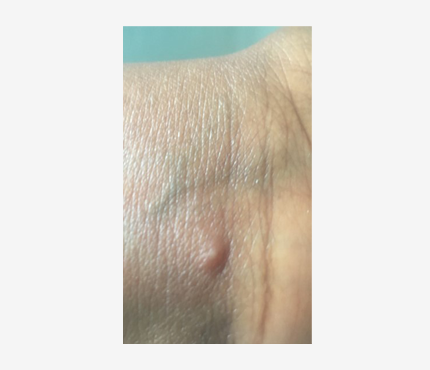
Photo Credit: NHS England High Consequence Infectious Diseases Network
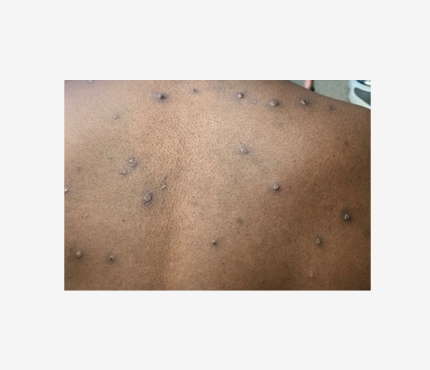
Photo Credit: NHS England High Consequence Infectious Diseases Network
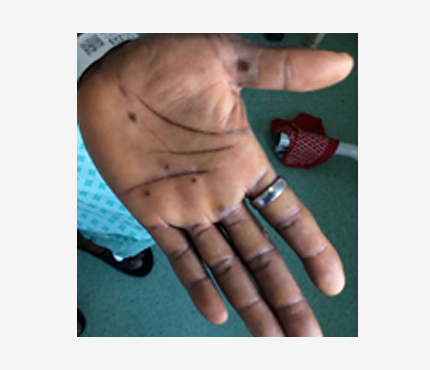
Photo Credit: NHS England High Consequence Infectious Diseases Network
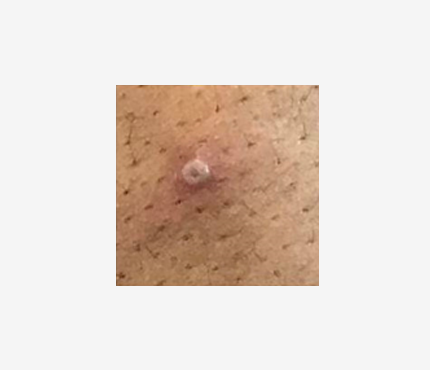
Photo Credit: NHS England High Consequence Infectious Diseases Network
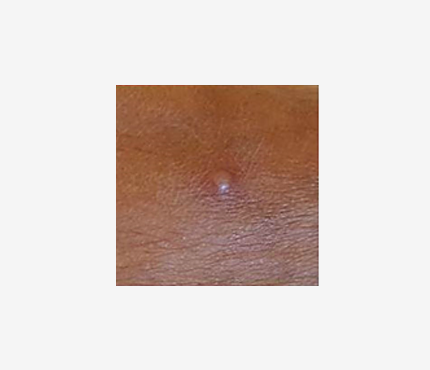
Photo Credit: NHS England High Consequence Infectious Diseases Network
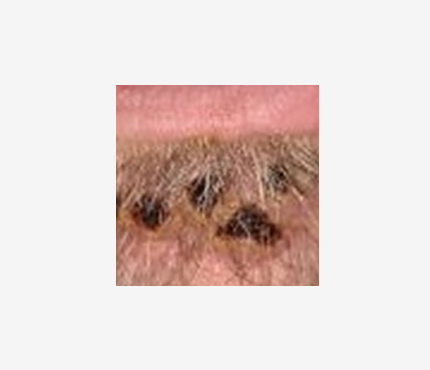
Photo Credit: NHS England High Consequence Infectious Diseases Network
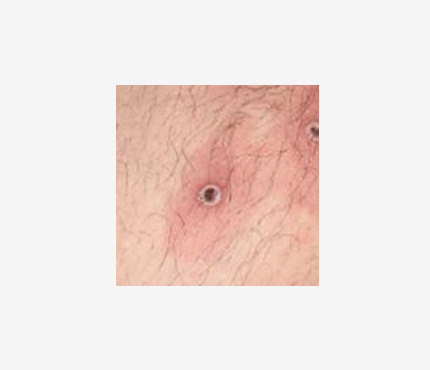
Photo Credit: NHS England High Consequence Infectious Diseases Network
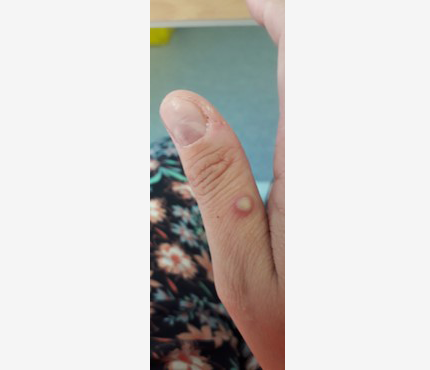
Photo Credit: NHS England High Consequence Infectious Diseases Network
Resources
NYSDOH Downloadable Materials:
- New York State and New York City Virtual Briefing for Elected Officials - Video, Slides (PDF) (June 16, 2023)
- New York State and New York City Mpox Town Hall (July 11, 2022)
- 3 Steps to Manage Mpox
- Poster: Protect Yourself, Your Friends and Your Community
- Poster: Protect Your Community and the People You Party or Play With
- Mpox and Sexual Health: What you Should Know
- Palm Card
- Information Card
- Poster: Mpox Vaccination - It Take Two Doses (Publication #13750)
- Poster: Mpox Vaccination - It Take Two Doses - Clasped Hands (Publication #13751)
- Poster: Mpox Awareness - Know (Publication #13752)
- Poster: Mpox Awareness - Know – Body (Publication #13753)
- Poster: Mpox Awareness - Know – Tattoo (Publication #13754)
- Poster: Mpox Awareness - Know – Arm (Publication #13755)
- New York State Mpox Social Media Toolkit
Additional NYSDOH Resources:
- Questions and Answers Regarding Mpox For Administrators and Staff of Institutions of Higher Education (IHEs) such as Colleges and Universities (Also available in Spanish)
- Guidance for Cleaning and Disinfection of Non-Healthcare Settings: During and After Isolation for Mpox (Also available in Spanish)
CDC Resources:
Press Releases
- May 1, 2023: New York State Department of Health Partners with NYC Health Department to Launch Mpox Vaccine Campaigns Urging Eligible New Yorkers to Prepare Now for a Healthy Summer
- August 22, 2022: Department of Health Announces Latest Monkeypox Vaccine Distribution
- August 3, 2022: Governor Hochul Announces Latest Monkeypox Vaccine Distribution Following Phase 3 Federal Allotment of Doses for New York State and New York City
- July 29, 2022: Governor Hochul Declares State Disaster Emergency in Response to Ongoing Monkeypox Outbreak
- July 28, 2022: State Health Commissioner Issues Declaration of an Imminent Threat to Public Health for Monkeypox Virus
- July 28, 2022: Statement from Governor Kathy Hochul on 110,000 Additional Monkeypox Vaccine Doses to New York State and New York City
- July 25, 2022: Governor Hochul Announces Continued Expansion of Monkeypox Testing Capacity with Approval of Quest Diagnostics' New PCR Testing Application
- July 19, 2022: Governor Hochul Announces Latest Monkeypox Vaccine Distribution Following 2B Allocation From the Federal Government
- July 14, 2022: Governor Hochul Announces New SMS-Text Effort to Deliver Latest Monkeypox Information to New Yorkers
- July 12, 2022: State Department of Health Announces Additional Dose Allocation In Phase 2 of Monkeypox Response Strategy
- July 7, 2022: State Department of Health Updates New Yorkers On Monkeypox Response Strategy
- June 7, 2022: State Department of Health Update: First Case of Orthopoxvirus/Monkeypox Outside of New York City
- May 26, 2022: State Department of Health Update On Case of Probable Monkeypox In New York City